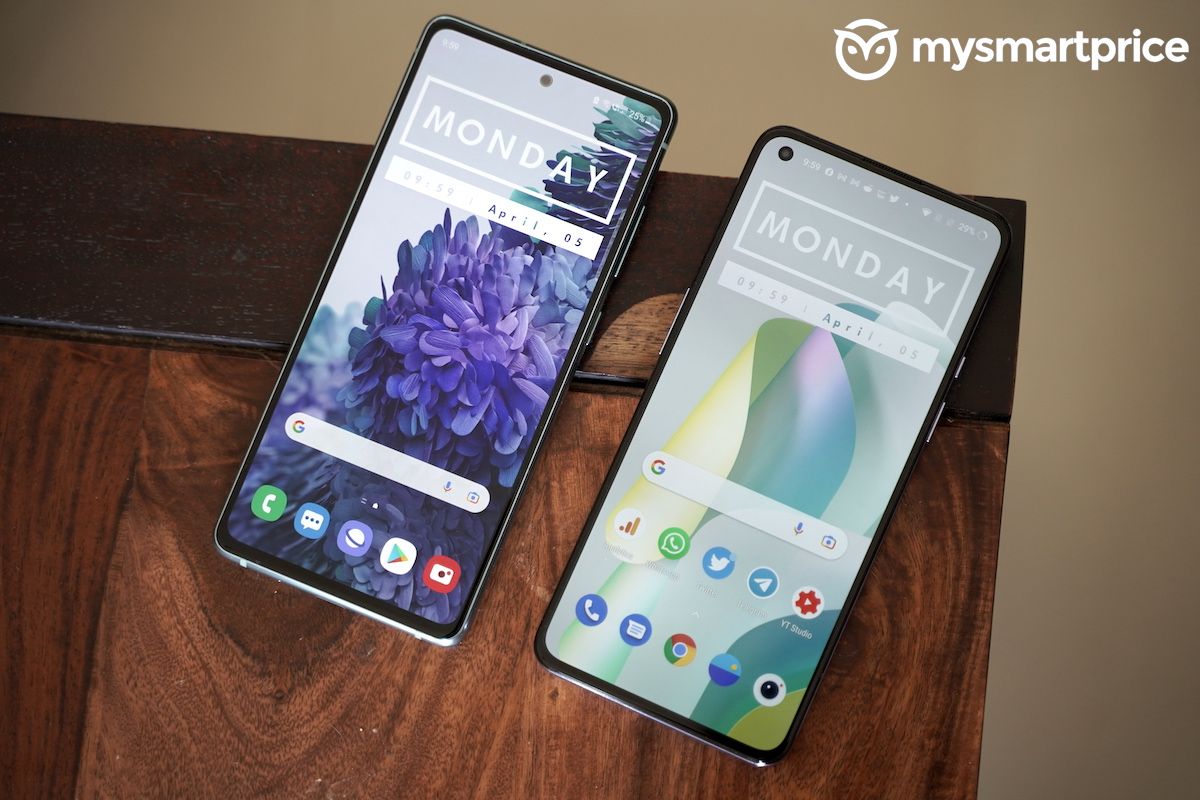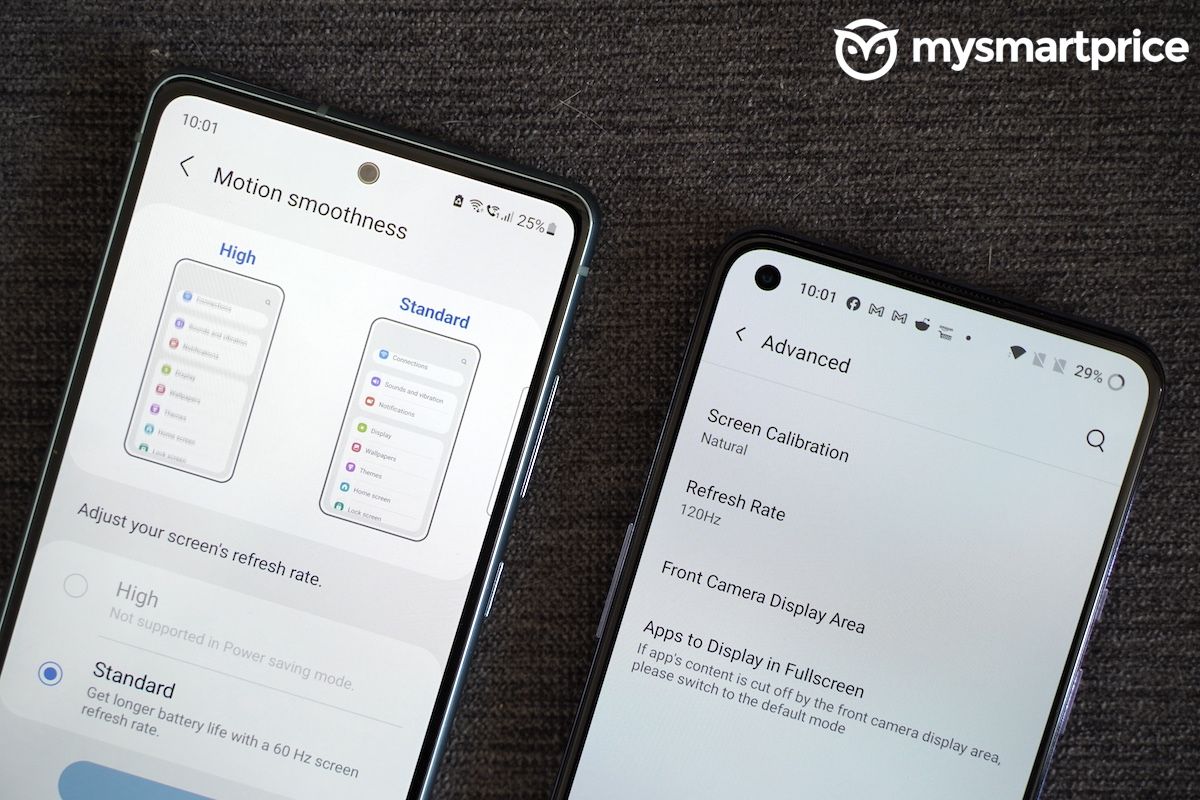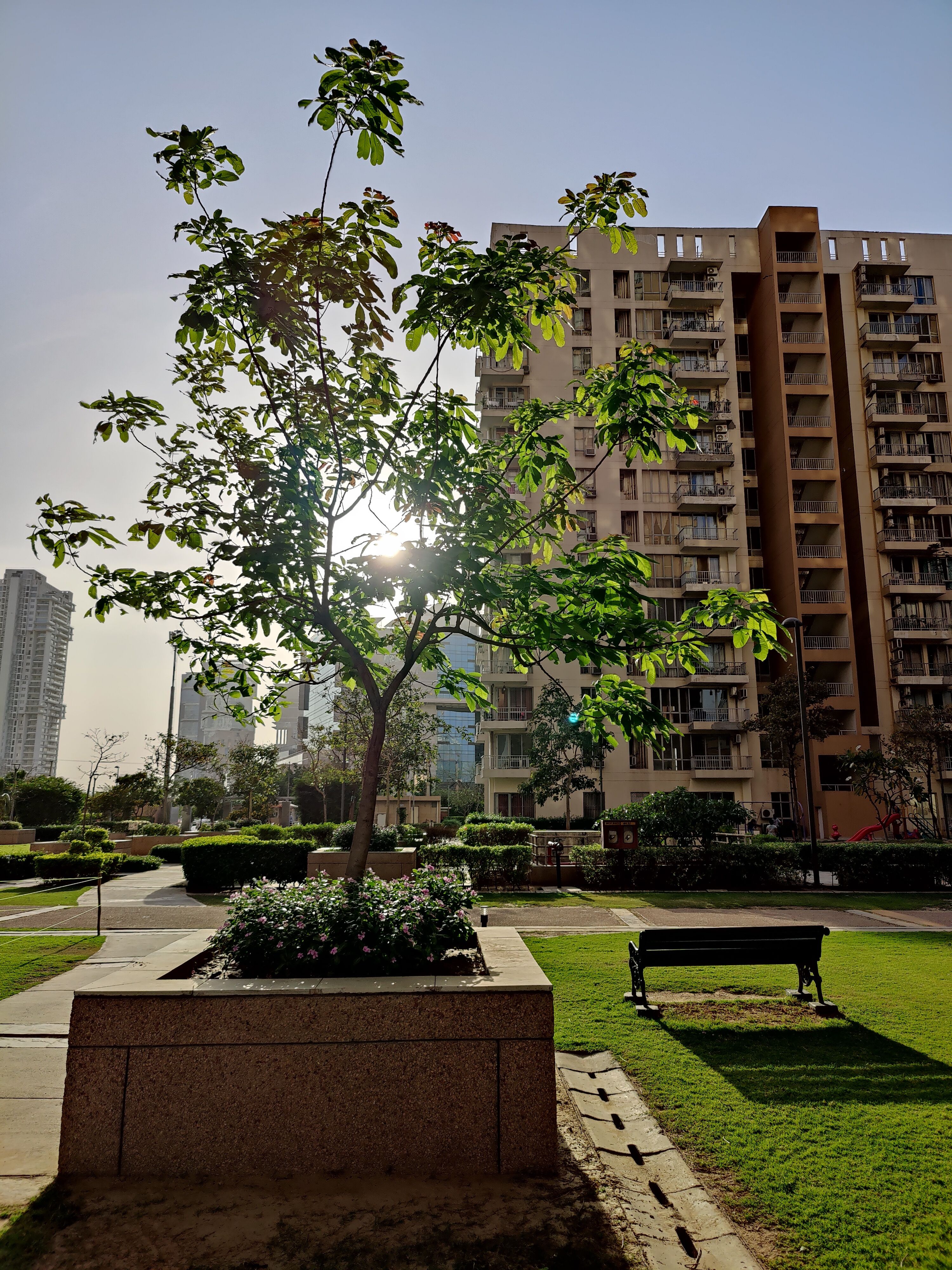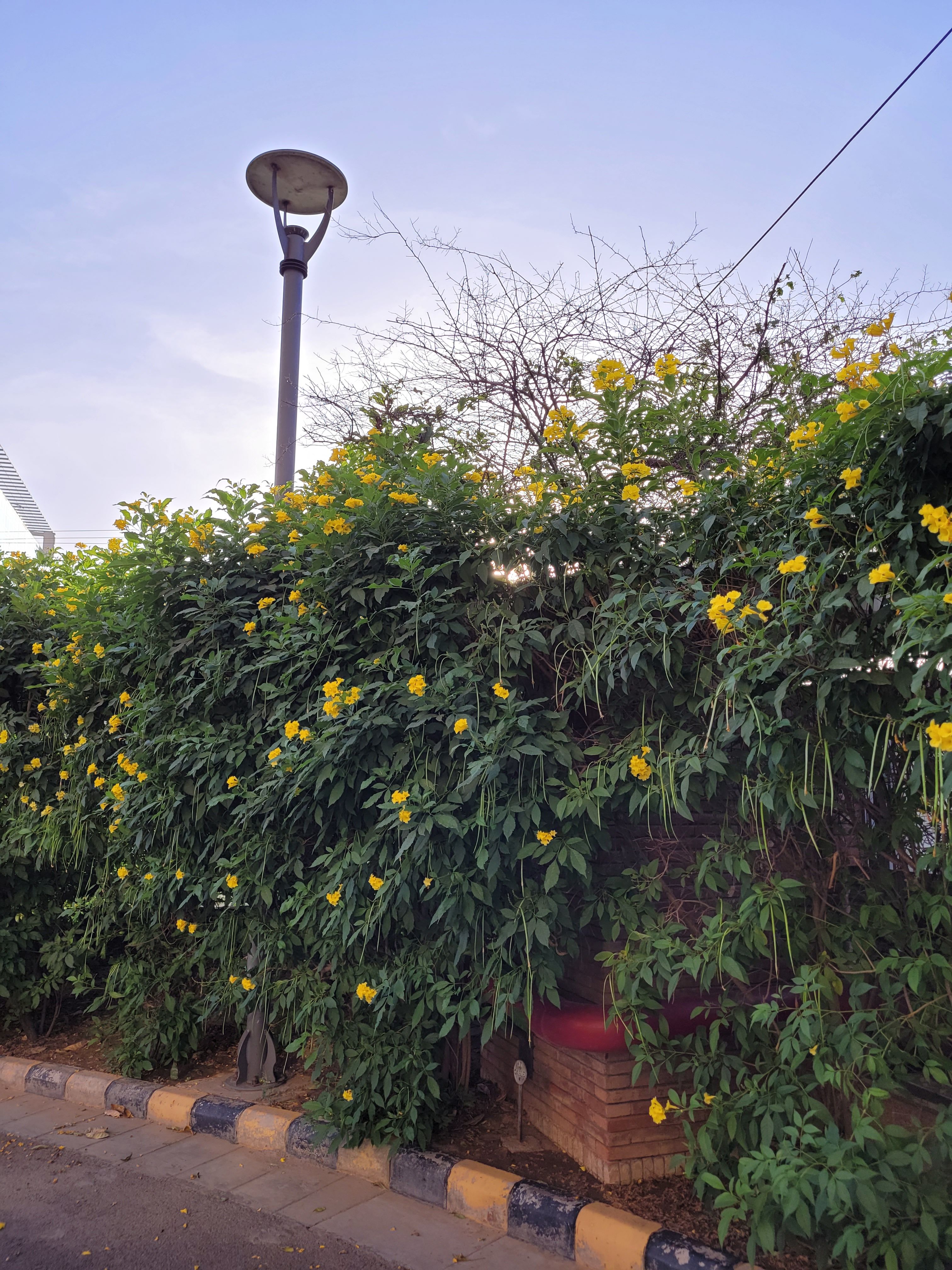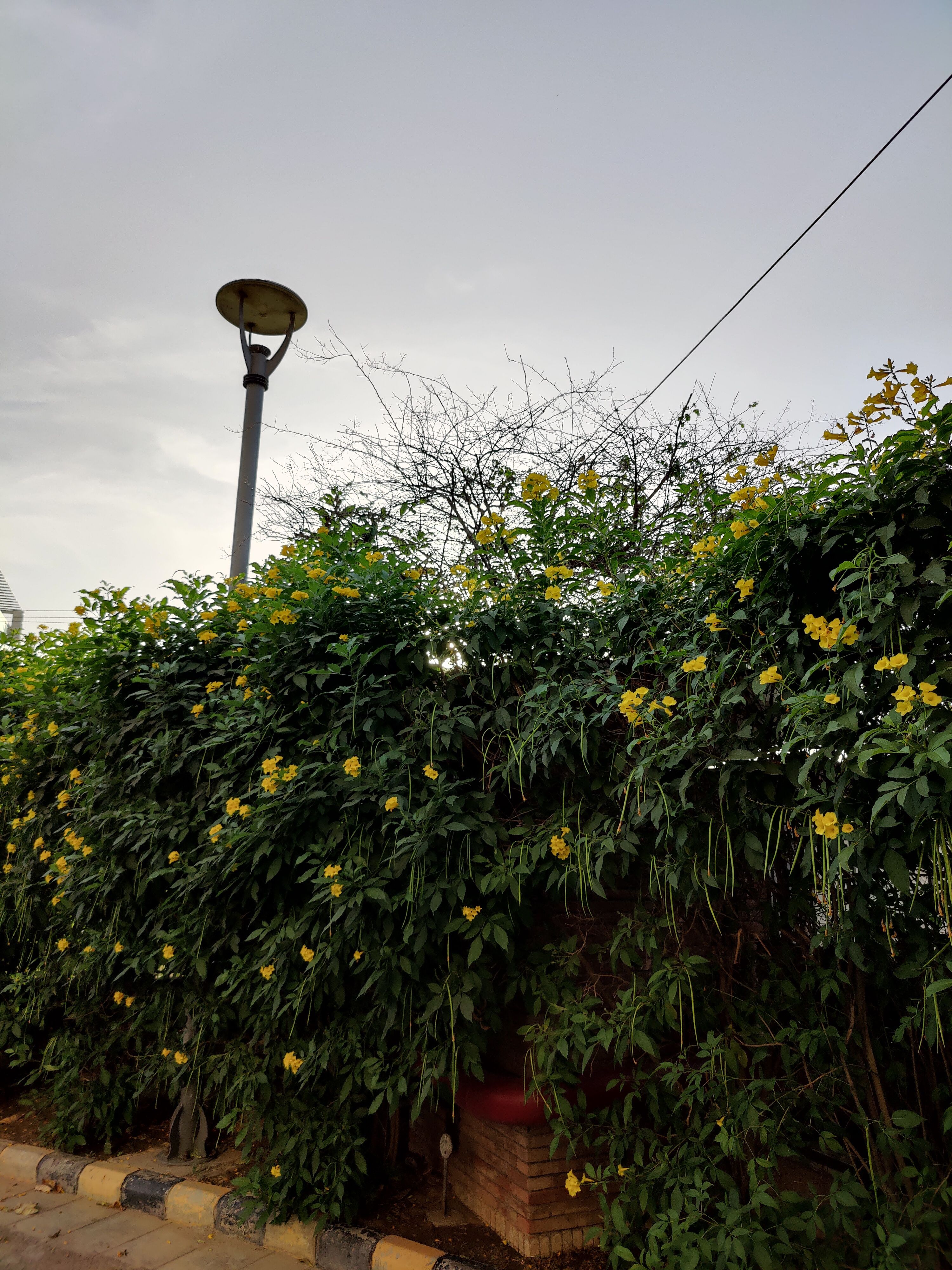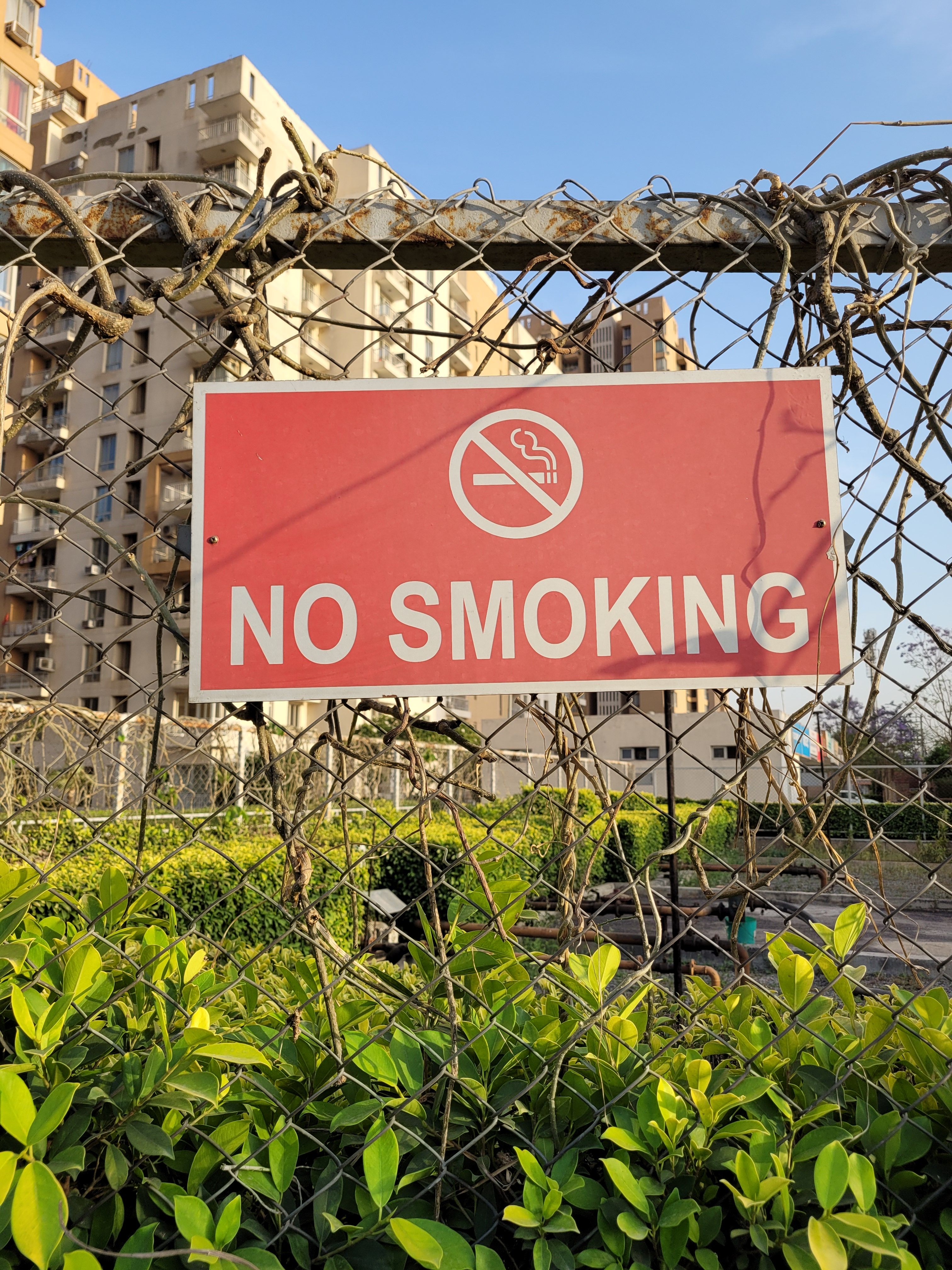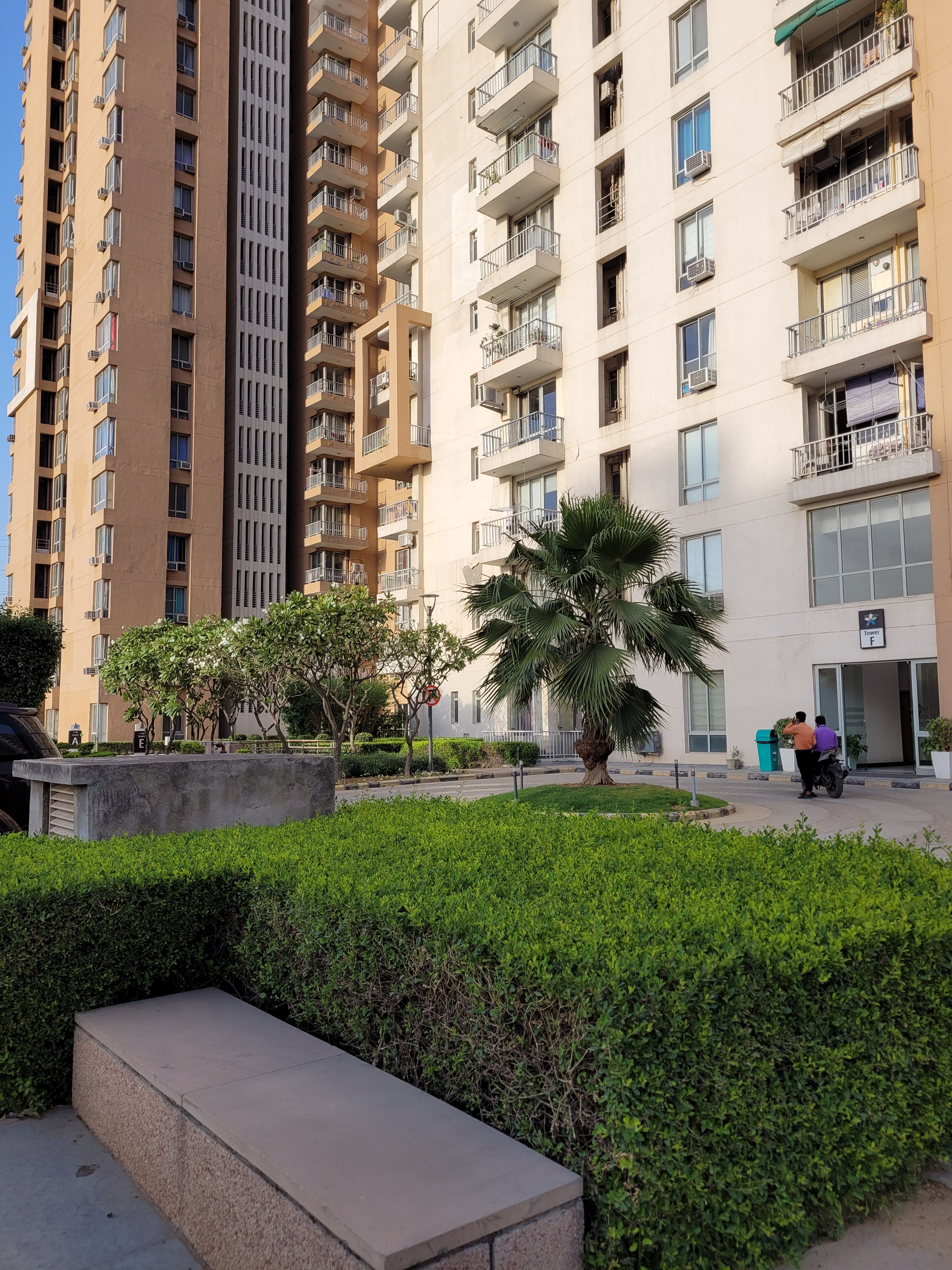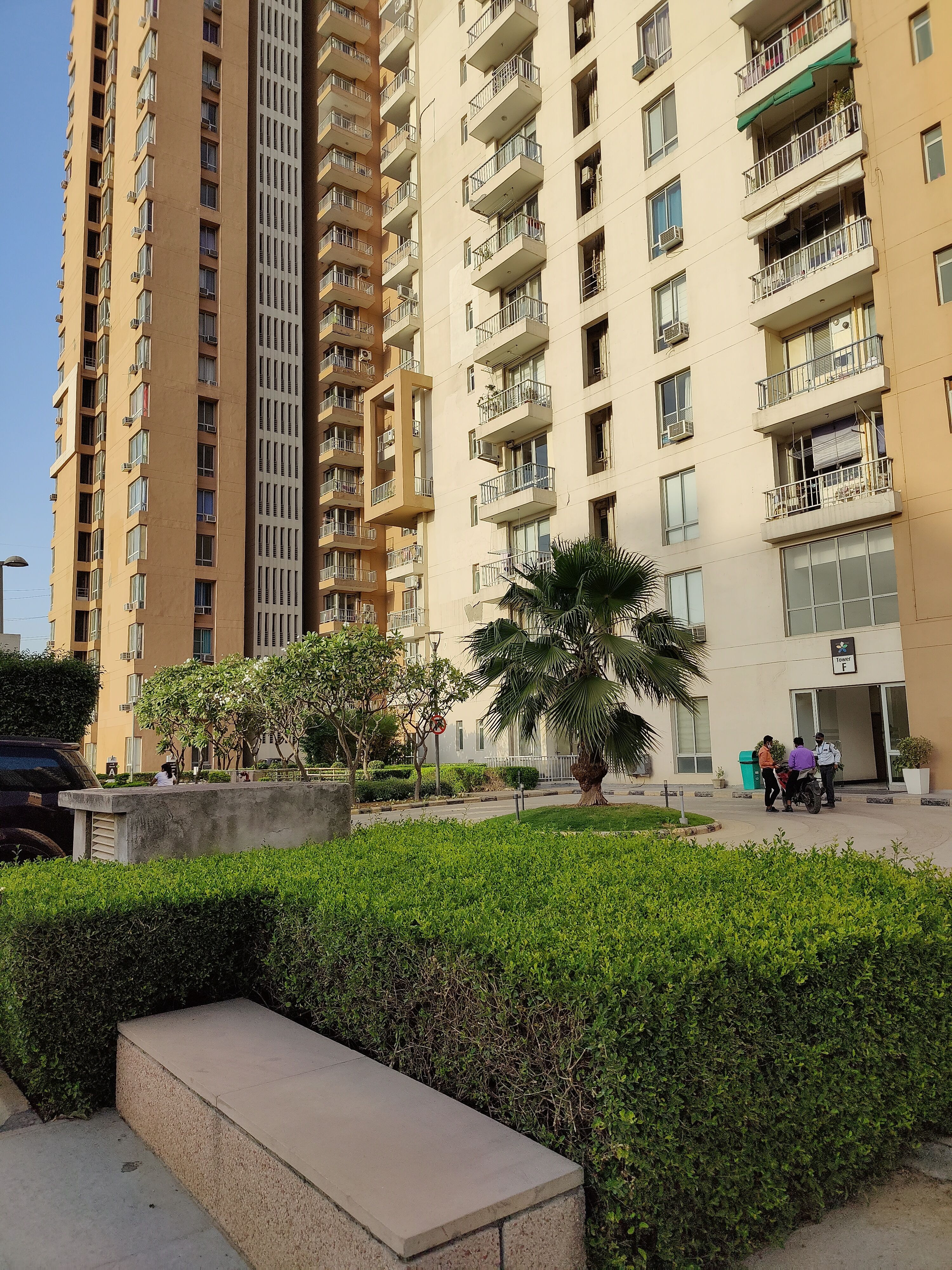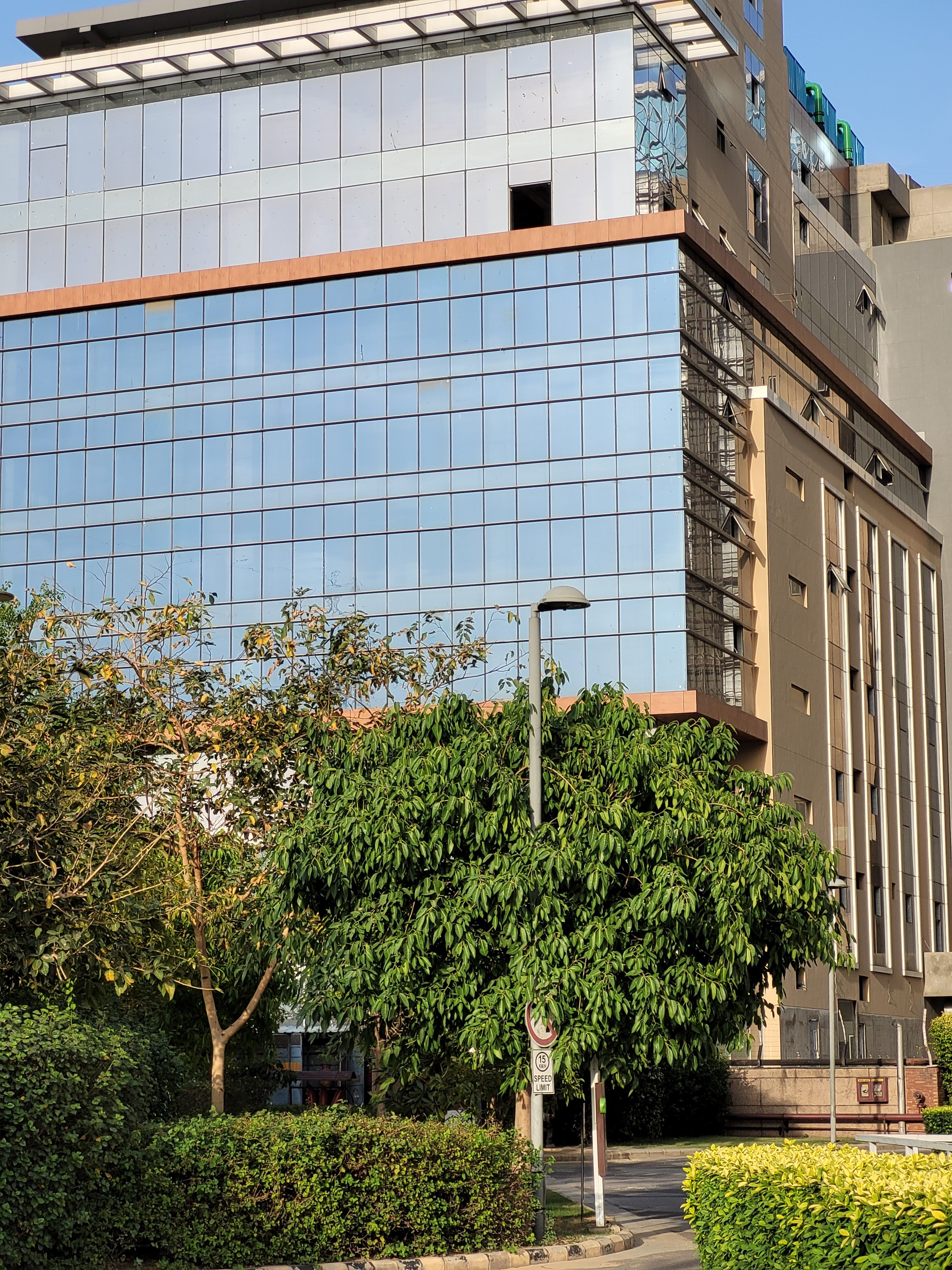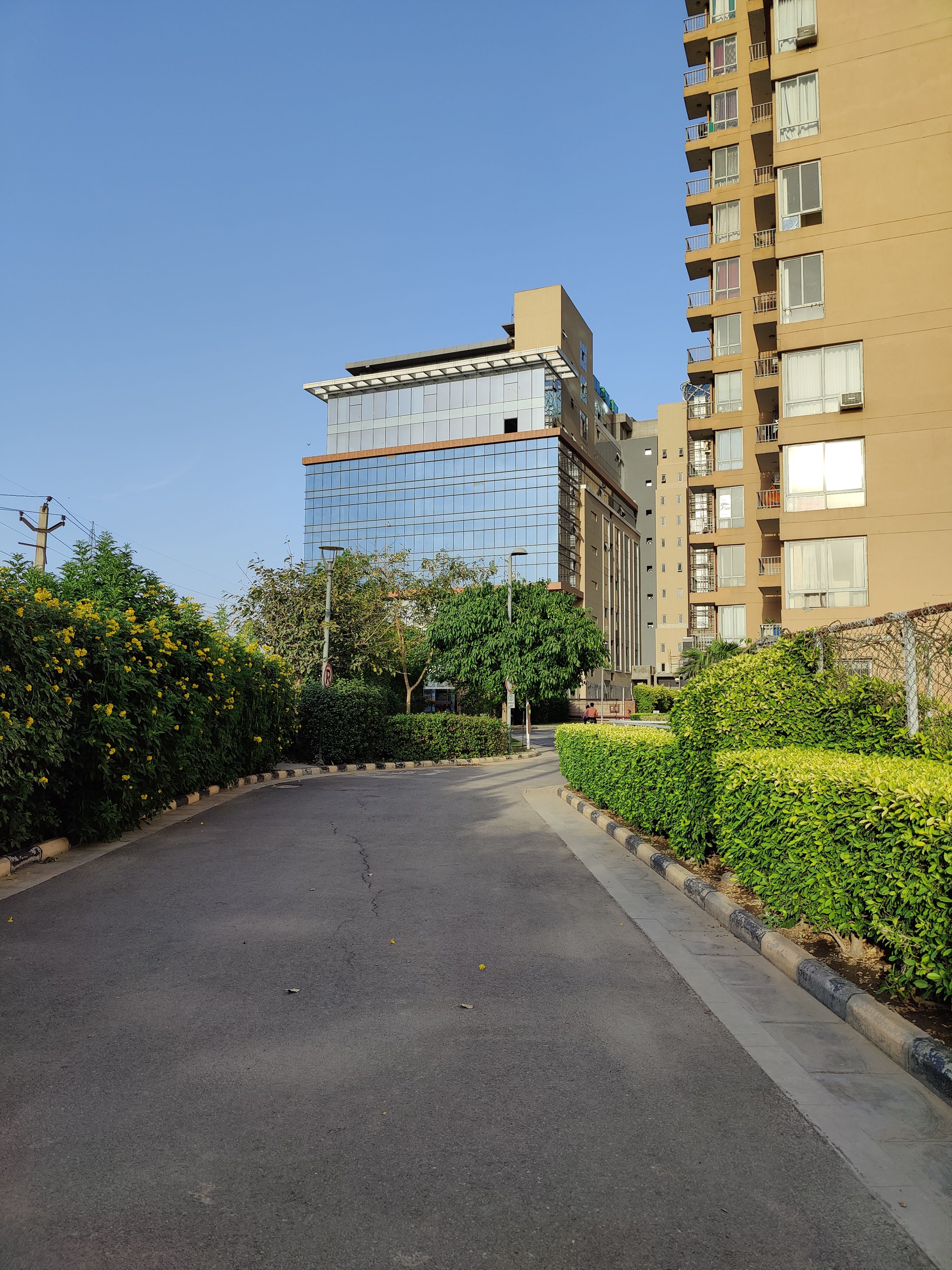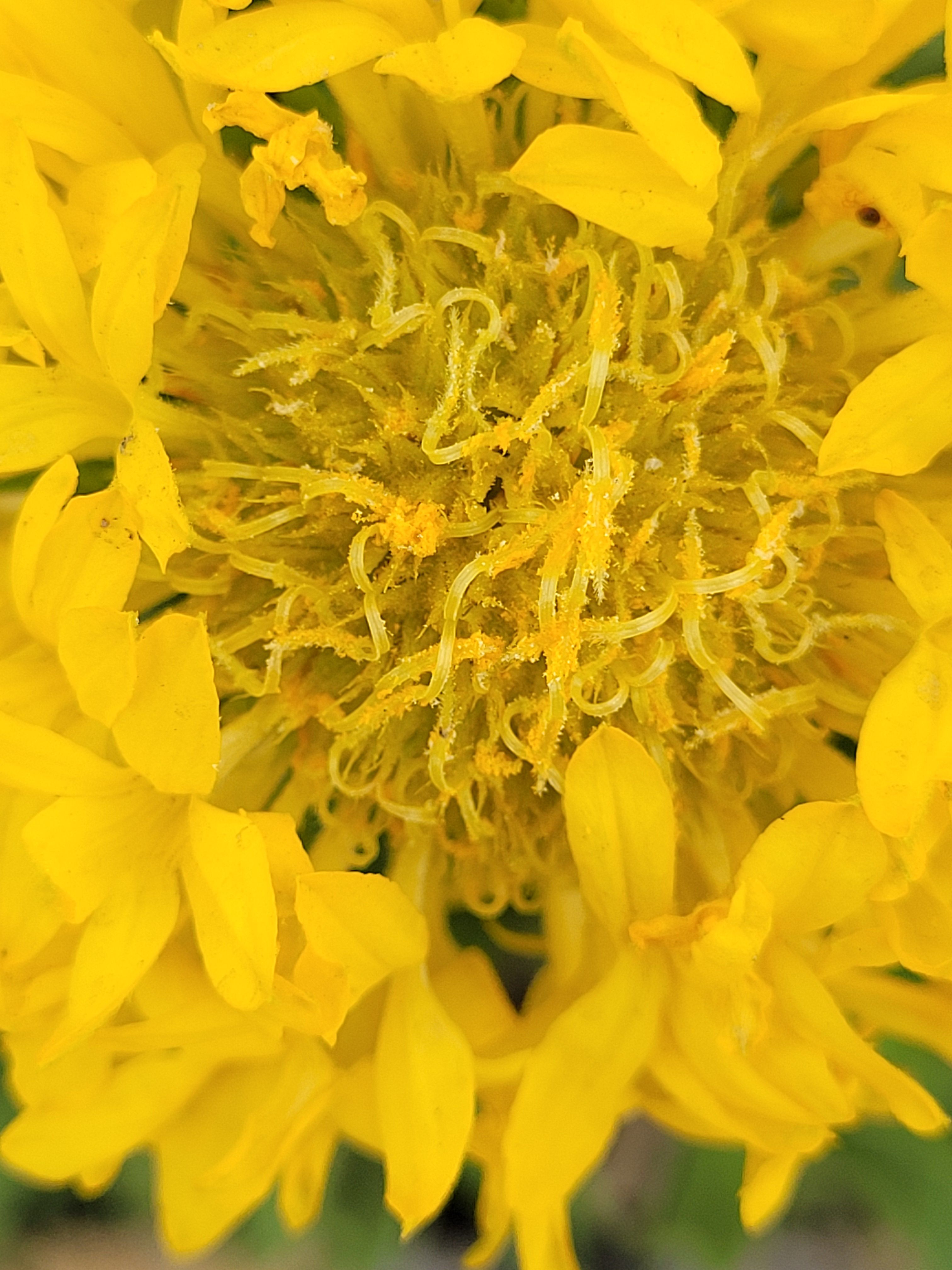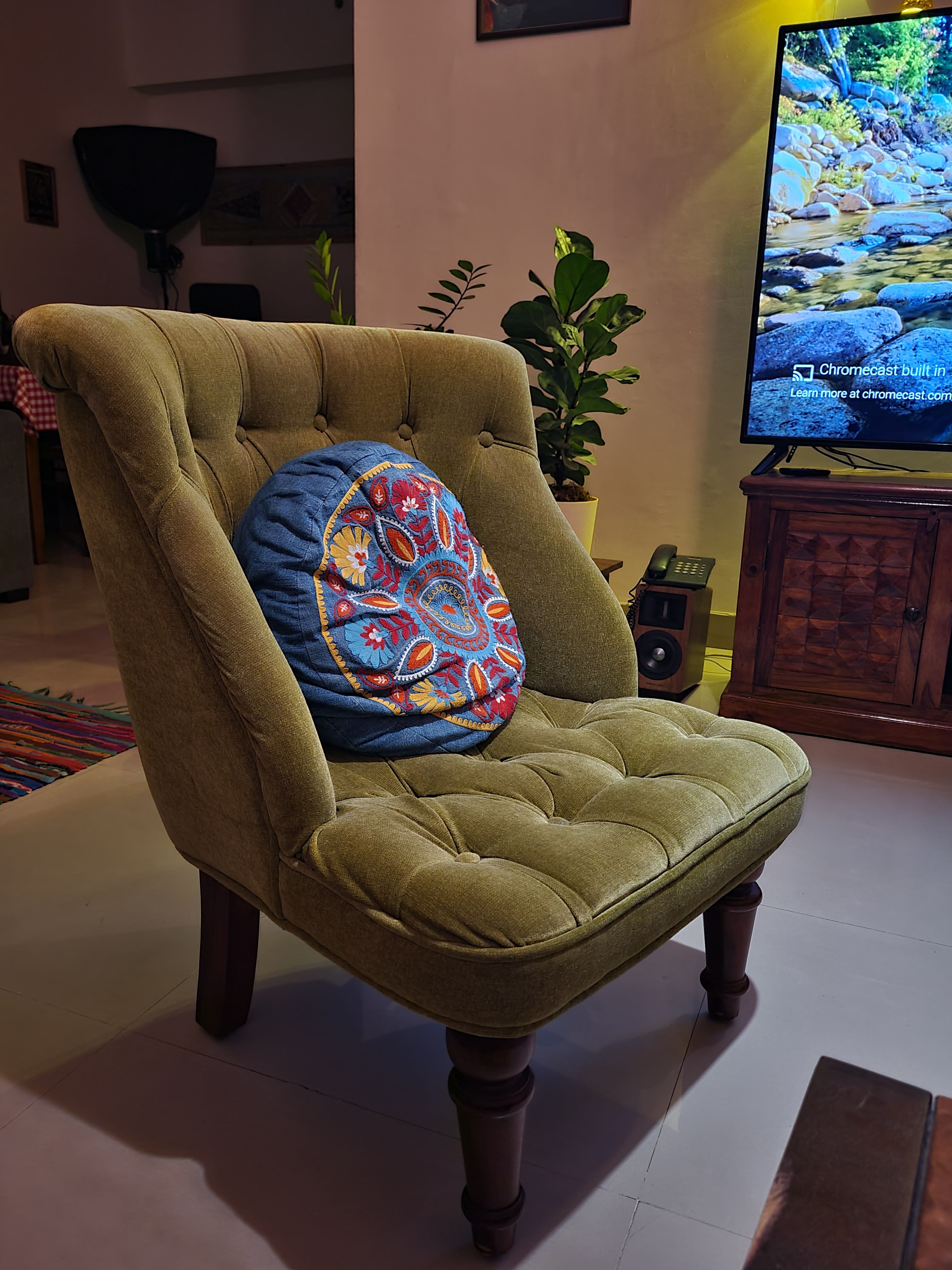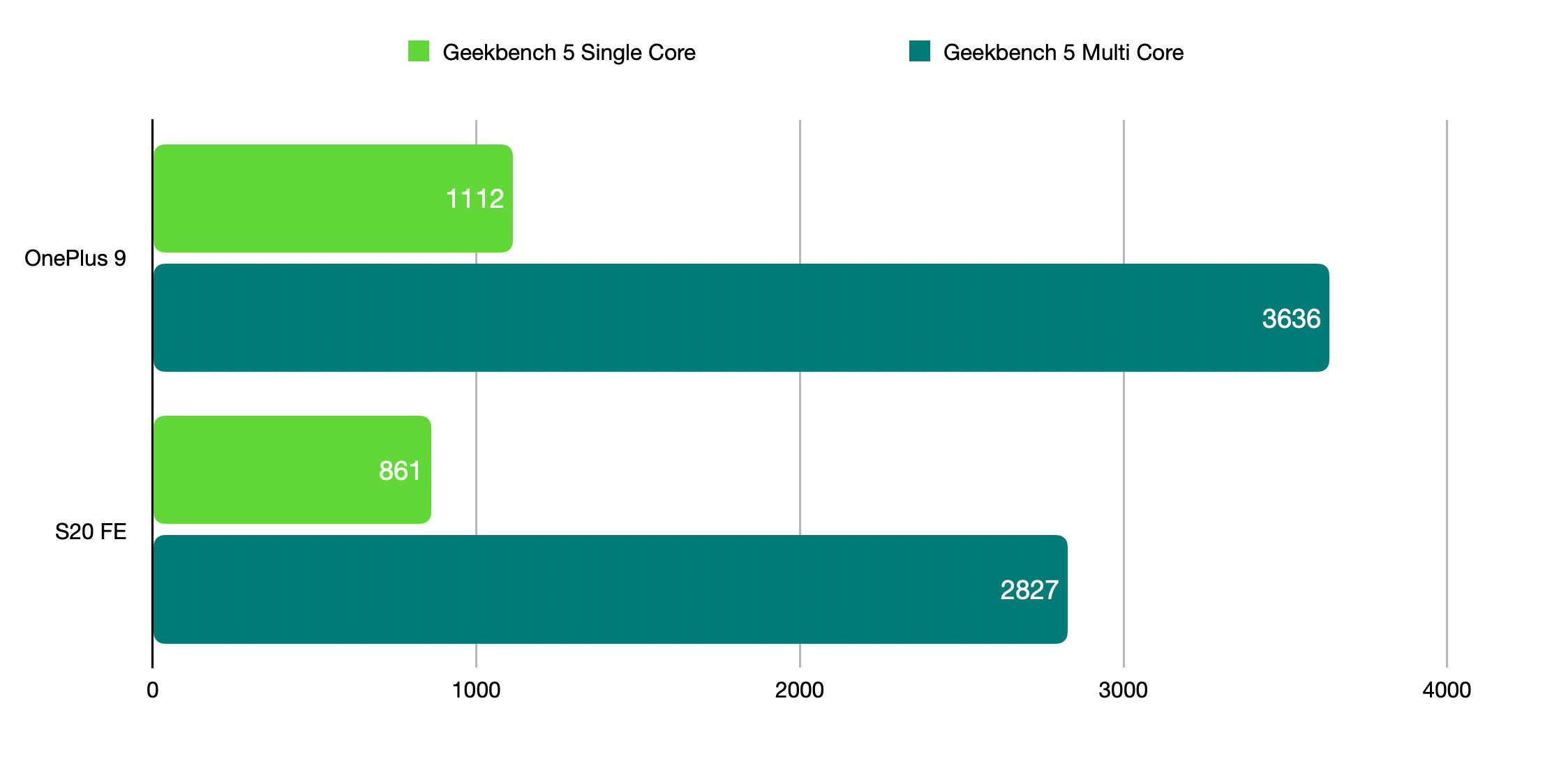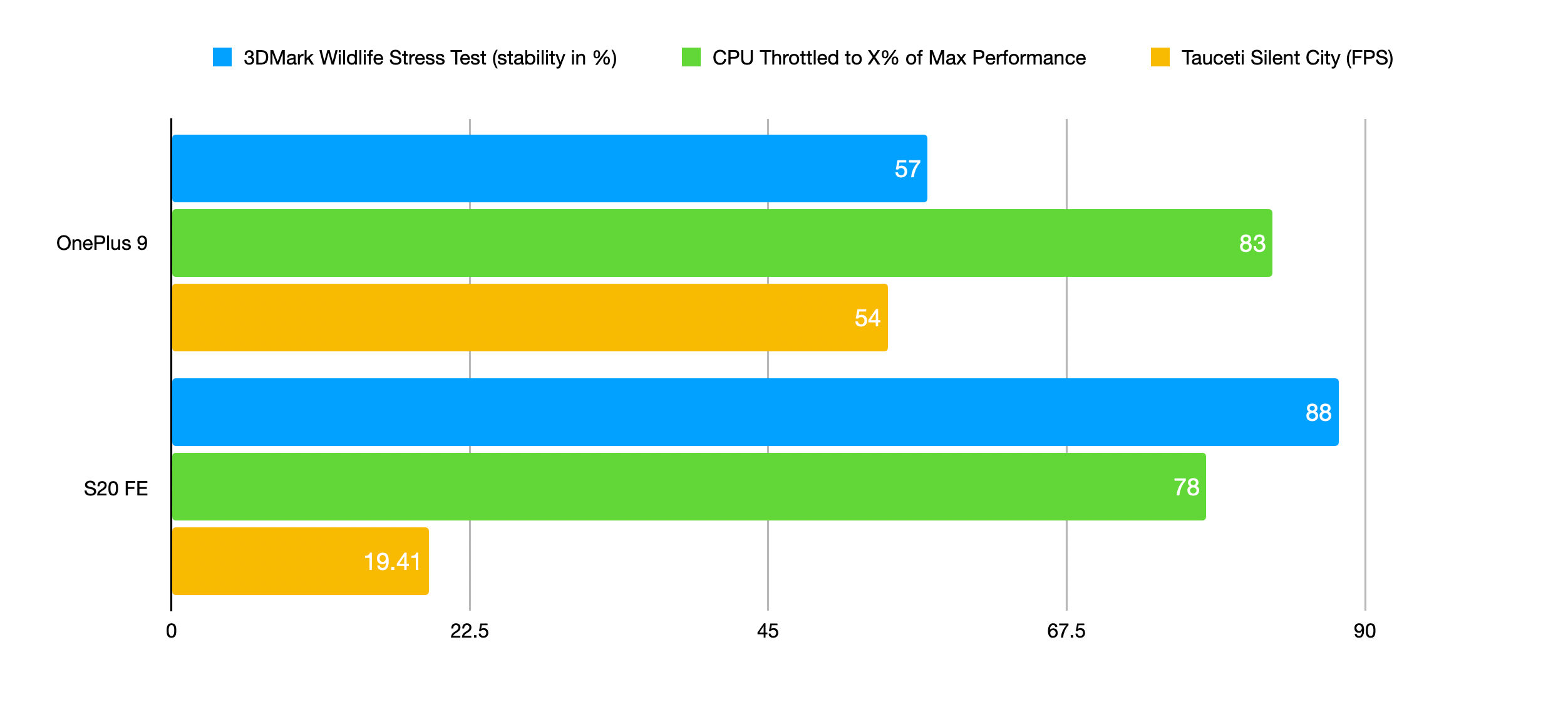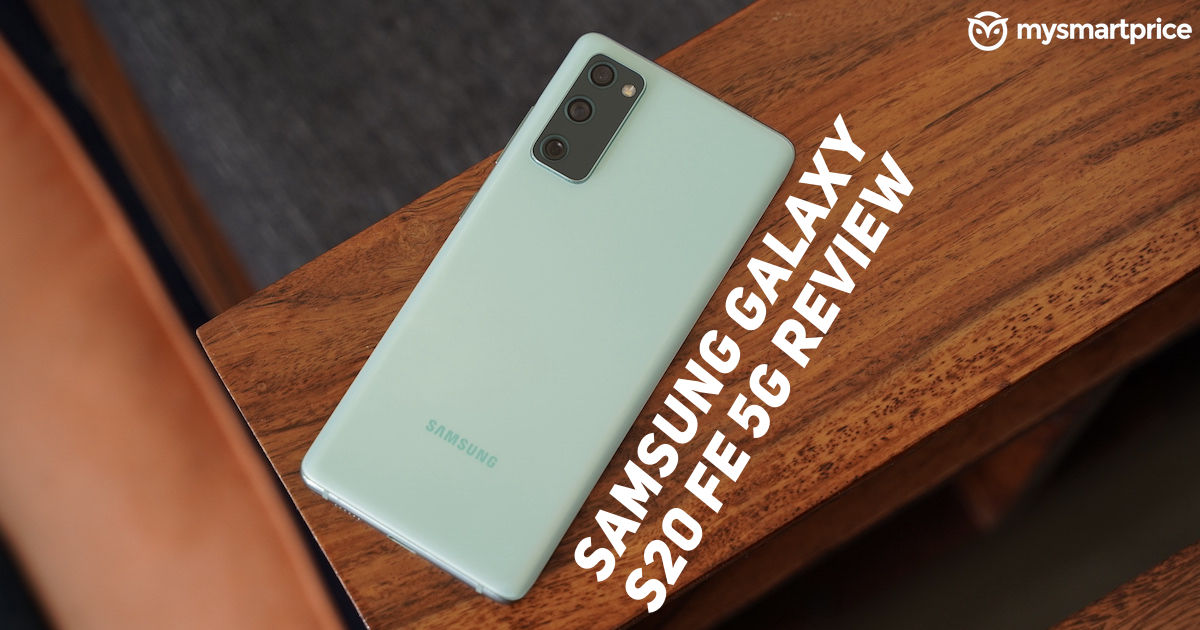
I am not going to waste any time here. The Galaxy S20 FE 5G with Snapdragon 865 that launched globally last year, and won a lot of best phone awards, is the best Samsung phone in India in 2021.
Design
The S20 FE 5G looks just like the S20 FE 4G. So, no changes in design here. You get the same matte plastic rear with an aluminium frame in a slew of colourful options. In comparison, the OnePlus 9 (review) has a glass body with a plastic frame. Honestly, both approaches feel fine to me and looks are subjective. If you ask me, I like the design of the S20 FE 5G because it feels a little playful and has a very Nokia Lumia-esque aesthetic with its matte polycarbonate build. Although, OnePlus’ iconic Alert Slider was something I missed on the S20 FE 5G.
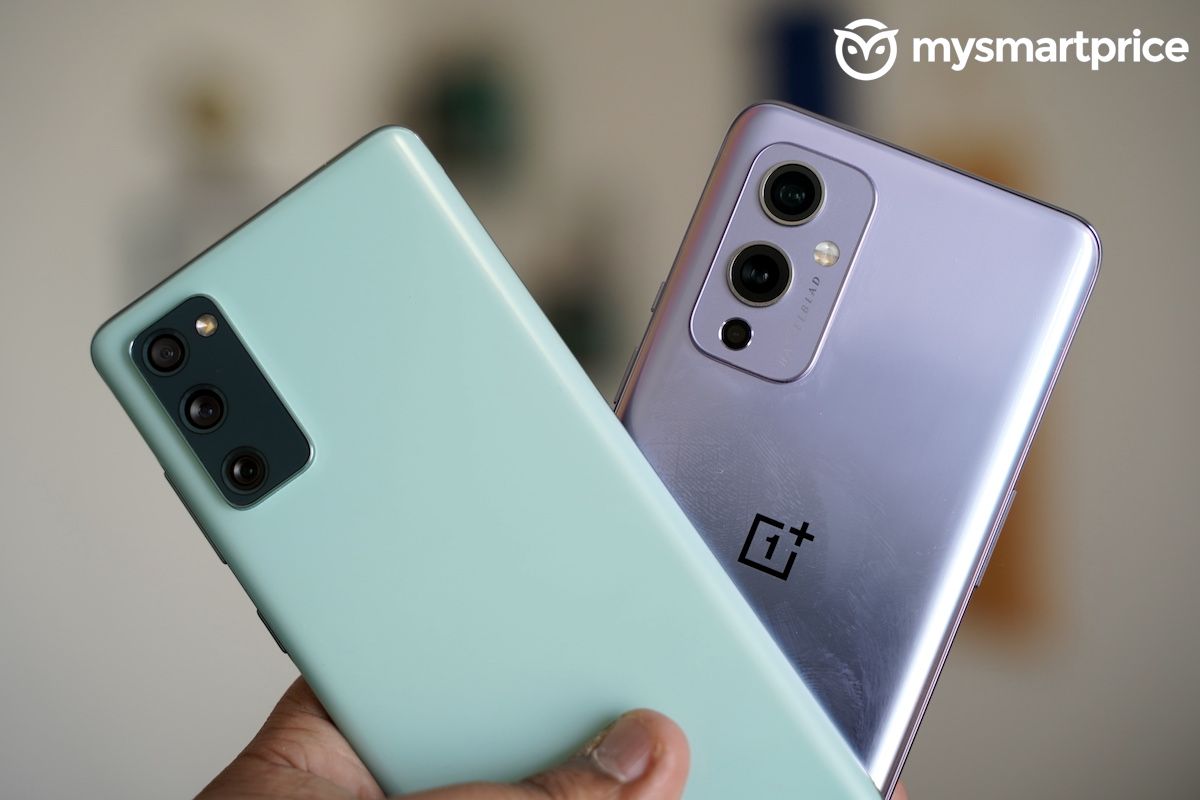
The in-hand feel is very, very identical on the two phones actually. Although, the OnePlus 9 does feel a tad bit slimmer and lighter because it is. However, you won’t notice any difference in daily usage.
Overall though, I’d pick the S20 FE 5G as the better designed smartphone of the two. Plus, the S20 FE 5G goes for the kill with the IP68 rating, which the OnePlus 9 lacks. Definitely, a very useful feature in a flagship phone.
Display
The displays on the two phones are very similar too. You get a 6.5-inch display on the OnePlus 9 as opposed to the 6.55-inch one on the OnePlus 9. Both the phones have the same FHD+ AMOLED flat panel, which is called Super AMOLED on the S20 FE 5G and Fluid AMOLED, for some godforsaken marketing reason, on the OnePlus 9. They also offer support for HDR10+ content but the S20 FE 5G didn’t show up HDR videos on Netflix, where the OnePlus 9 did. Odd but maybe a software update will fix that soon.
Now, for the tuning, I found both the displays extremely punchy in their respective vivid colour profiles. But, the Natural and DCI P3 profiles on the OnePlus 9 felt more professionally tuned with more natural colours. Plus, the peak brightness is higher on the OnePlus 9 both in regular and in HDR mode. But, in daily usage because both are equally legible outdoors. Plus, the S20 FE is far more reliable when it comes to Auto Brightness performance, which has always been a sore point for OnePlus phones.
That said, the touch response rate of 240Hz and the refresh rate of 120Hz on both the phones are well matched. I actually found both the phones pretty responsive in daily usage with nothing to tell the two apart.
As for the in-display fingerprint scanner, the OnePlus 9 was a tad faster in unlocking the phone and I really appreciate the vibration feedback that you get with it as well. Talking about vibrations, the OnePlus 9’s haptic feedback is tighter compared to the S20 FE 5G for sure.
Here’s the thing, there is absolutely nothing wrong with the S20 FE 5G’s display. It is a fantastic panel and visually maybe you will find it more attractive too. That said, every single phone these days is trying to one up each other and even minor advantages need to be considered while making a buying decision. Keeping that in mind, the OnePlus 9 has a very, very tiny advantage here in the display section.
Camera
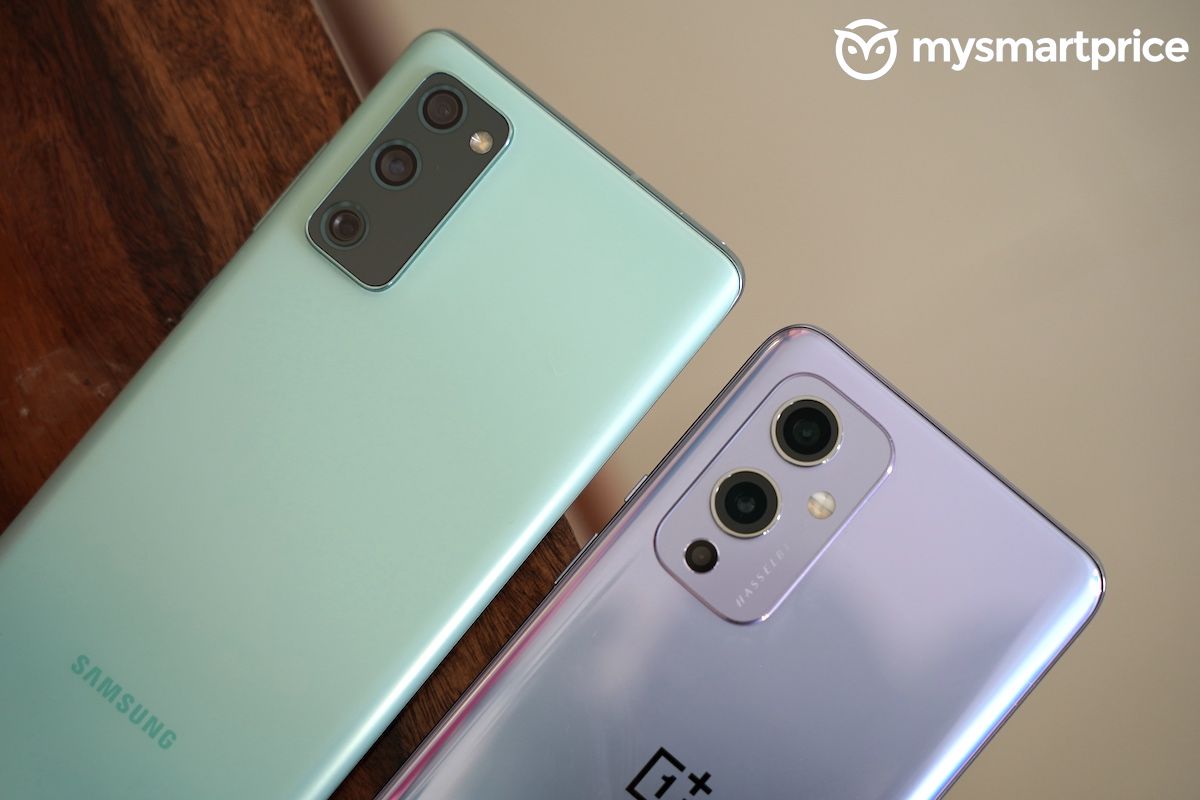
As for the cameras, you get three on the rear, which includes a wide, ultrawide, and telephoto on the S20 FE 5G. The OnePlus 9 has a triple camera setup too but it doesn’t have a telephoto and instead comes with a 2MP mono sensor. The glaring omission on the OnePlus 9 is obviously the support for OIS on the primary camera, which, of course, is present on the S20 FE 5g. Selfies are handled by a 32MP shooter on the S20 FE 5G and a 16MP one on the OnePlus 9. Note that I updated the OnePlus 9 to the latest firmware, which included a lot of firmware updates. Anyway, let’s see how the two phones compare in camera performance:
- Starting with the dynamic range performance, as established before the OnePlus algorithm tends to crush the shadows. But, here’s the thing, the Samsung Galaxy S20 FE 5G tends to clip the highlights, as you can tell from our first sample. Both of which are unstable approaches to multi-frame dynamic range processing. In the second image, the HDR processing on Samsung has decided to crank up the saturation the moment the camera spotted the sky. This is with Scene Optimiser off, mind you. So yeah, it will boil down to what kind of dynamic range look you prefer.
- As for the details, I find the OnePlus 9’s over-sharpening slightly over bearing here. And, here I can show you clear examples of sharpening causing artifacting, which means it is over-sharpening. If you take a look at the top left corner of the building, you will see that the edges are jagged almost like OnePlus switched off anti-aliasing. Gamers will get it. The Galaxy S20 FE 5G keeps it sharp and natural at the centre. But, the corner sharpness at the bottom edges is better on the OnePlus 9. Honestly, the sensor sharpness is good enough on both. So, nothing to worry about.
- Colour reproduction was slightly inconsistent on the Samsung Galaxy S20 FE 5G. Take for example, this shot of the red flower. The OnePlus 9, thanks to its Hasselblad tuning, keeps it as close to natural as possible. The S20 FE 5G has botched the reds. In the second picture, the S20 FE 5G captures an overall warm picture with fairly accurate red reproduction. But, the blue skies, the green leaves, and the building on the rear are more accurate on the OnePlus 9. The red, on the other hand, is slightly boosted. Overall, the colour profile of the OnePlus 9 is better but the S20 FE 5G, captures attractive images that will appeal to many folks.
- In human subject shots, the OnePlus 9 and the S20 FE 5G capture the facial tones well, with the OnePlus 9 being a tad bit more accurate. This includes the colour of my shirt, which is extremely accurate on the OnePlus 9. Clearly, the OnePlus 9 is benefitting from the Hasselblad collaboration when it comes to colour science.
- In portrait shots, the edge detection in this tough frame was better on the S20 FE 5G. OnePlus needs to work on the edge detection for sure. Samsung’s portrait algorithm is actually better compared to OnePlus’.
- Moving on to selfies, let’s start with the HDR selfies where the S20 FE 5G clearly shows its superiority with far better colour tones and smooth dynamic range performance on the face with no over-exposed spots. The OnePlus 9’s selfie also has a red tinge. In the second shot, I had a nice warm golden waning sun lighting me up and the S20 FE 5G captured a very natural facial tone and crisp details.
- I took a selfie portrait in the same setting and the S20 FE 5G impressed me once again with the facial tones and the semantic segmentation. The outline definition is a little harsh on the OnePlus 9. While the OnePlus 9’s selfie portrait is not bad looking, I don’t know why OnePlus couldn’t at least export the same Hasselblad colour science to the front cameras.
- Yes, the OnePlus 9 has a very high resolution ultrawide angle camera but when it comes to colour science consistency between the primary camera and the ultrawide one, the S20 FE 5G is more accurate. But, when it comes to details and textures, the OnePlus 9 is obviously sharper around the larger portion of the image. Plus, I did notice some shadow noise in the S20 FE 5G.
- One of the biggest advantages on the S20 FE 5G is the 8MP 3x telephoto camera. I don’t even have to say that it is sharper compared to the digital crop on the OnePlus 9. The comparison pictures reveal it themselves.
- You can shoot macro pictures using the ultrawide camera on the OnePlus 9. You can use the 8MP 3x telephoto on the S20 FE 5G to match it. But, the OnePlus 9 offers a slightly sharper picture with better colour reproduction. I am not a fan of macro shots, though to be honest.
- In low light shots, both the phones are neck to neck when it comes to light sensitivity. I mean, I really couldn’t tell any difference in the two. With Night Mode on, it looks like both the images were actually captured by the same phone. The differences, if any, are barely visible. But yes, the OnePlus 9 offers a slightly better colour accuracy. But, the S20 FE offers telephoto low light as well. In the second sample, the OnePlus 9 Nightscape mode botches the colour temperature pretty badly. The dynamic range and the colour gradation maintained by the Galaxy S20 FE shows years of tuning experience by Samsung. The sharpness is way better too at close crop when you look at the chair. Easily I’d pick the Galaxy S20 FE for low light shots using the primary camera.
- And, I don’t even have to say this low light selfies are way better on the S20 FE with the support for Night mode. OnePlus 9’s selfie is comically bad.
- Low light portraits using the rear camera is better on the Galaxy S20 FE 5G, again. I mean, you get more natural colour tones where OnePlus 9 has decided to play Holi with the colours.
- But, if you like capturing low light ultrawide shots of landscapes, the OnePlus 9 is leagues better than the S20 FE 5G. Just look at the ugly green noise aberration in the S20 FE 5G’s rendition of the sky to judge for yourself. OnePlus offers a cleaner, more attractive overall image.
Both the phones can shoot 4K 60fps but the S20 FE 5G can do it with HDR and therefore the dynamic range performance is better. However, it isn’t stabilised compared to the OnePlus 9. As for the sound, both the phones are equally matched. No distinction whatsoever there. That said, if you match the frame rates, the OnePlus 9’s dynamic range improves drastically but the colour science is more accurate on the S20 F 5G. And, so is the stabilisation because you get OIS+EIS. But, if you want to shoot using the ultrawide angle camera, the OnePlus 9 offers up to 60fps video recording, where the S20 FE 5G tops out at 30fps. This itself is advantageous enough to go for the OnePlus.
- Front camera recording for vlogging is leagues better on the Galaxy S20 FE 5G with support for 4K 60fps albeit without electronic image stabilisation. You do get stabilisation at 1080p 60fps on the S20 FE 5G and checking the footage alongside the OnePlus 9, the S20 FE 5G is better. Undoubtedly.
While camera tests are generally tough to evaluate, I had a fair idea of which camera I preferred over the OnePlus 9 and the Galaxy S20 FE 5G. And, you guessed it right, it is the Galaxy S20 FE 5G, of course. Tells you how branding and big megapixels don’t mean much when evaluating everyday camera performance.
Software
Now, software and UI experience is where you need to, probably, spend most of your time, when you are planning on buying one of these phones. What you need to know is Samsung’s really on a roll with software updates and the S20 FE 5G comes with Android 11 with OneUI 3.0 out of the box. This is your full fledged OneUI experience with Samsung Pay, Knox, Microsoft apps, Dex, and the works. While the OnePlus 9 also runs Android 11 and March security update, lately OnePlus has been slightly iffy with software updates. Plus, Samsung has really committed to the software update cycle as well. These things matter a lot for a flagship experience.
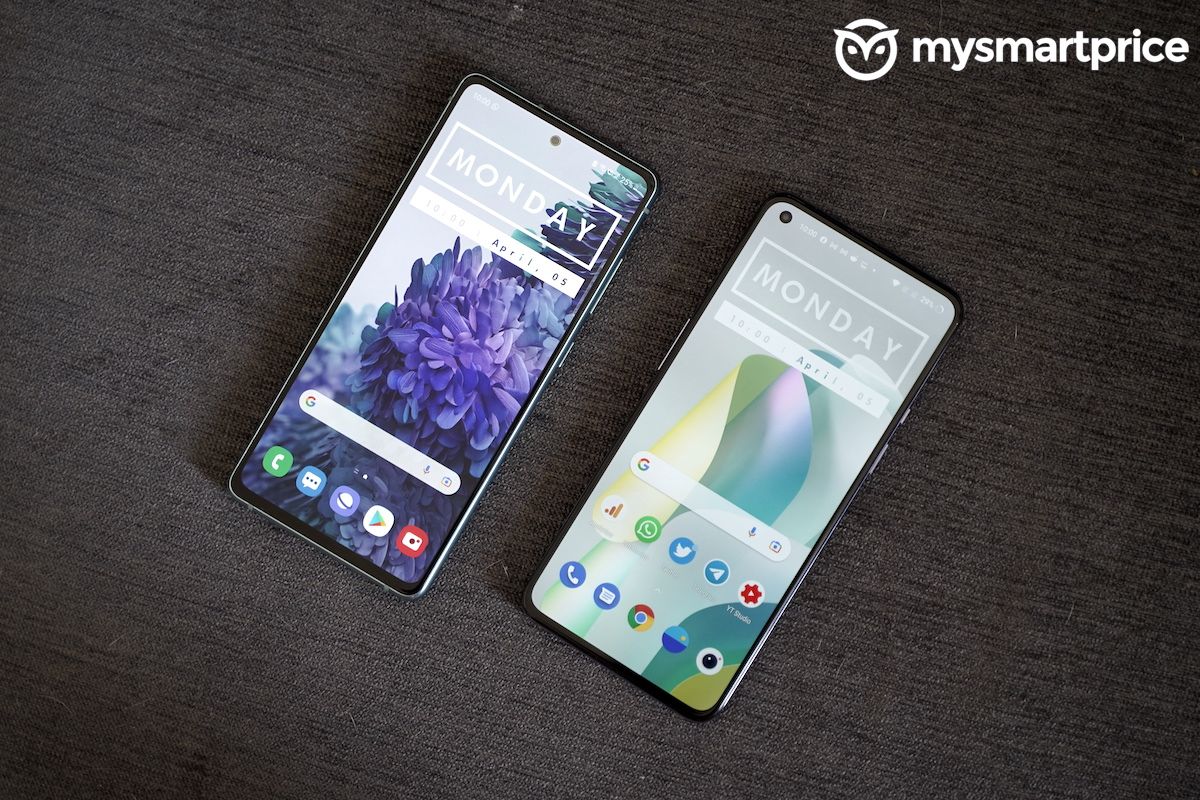
As for the software experience, you know that OnePlus 9 offers you clean, near Stock Oxygen OS, which has some of the best customisation and UI options out there. But, OneUI is very clean too now and it has so many great features as well. Let’s not forget that the OnePlus’ new UI design language is actually inspired by OneUI in more ways than one. I would actually give the advantage to OneUI on the S20 FE 5G because it was ad-free and offers me peace of mind with respect to software updates, something OnePlus was always praised for. Hope the company can fix the issue soon.
Performance

The S20 FE 5G has the Snapdragon 865 which is definitely a superior processor than the Exynos 990 inside the 4G variant launched last year. The phone doesn’t heat up as much and the battery performance has improved too, which I will come to in a bit.
Having said that, the OnePlus 9 is the phone to go for if you want raw performance for gaming thanks to the presence of the newer 5nm SD888 SoC. Demanding games such as Genshin Impact and PUBG run better on the OnePlus 9 compared to the S20 FE 5G. Although, if you play Call of Duty Mobile, both the phones perform similarly with the OnePlus 9 having only a slight edge. In day-to-day usage, the S20 FE 5G is almost as snappy as the OnePlus 9, though. Only speed nerds will be able to tell the difference. By the way, the S20 FE 5G has storage expansion with microSD card support available in a hybrid option in the tray.
Talking about the audio performance, the speakers on the Galaxy S20 FE sounds fuller and richer. You get a proper dynamic range with clean stereo separation as well. The OnePlus 9 does sound loud but not as full. Plus, the audio performance through earphones was a notch cleaner on the S20 FE 5G. Better yet, if you pair it with a Samsung branded truly wireless earbuds with SCALABLE codec you can expect a vastly refined audio fidelity.
Battery and Network Performance
Both the phones have a 4500mAh battery but the Galaxy S20 FE 5G has a slightly better battery life. I got around 6 hours of SoT from the phone as opposed to 5 hours on the OnePlus 9. However, the charging speeds are easily bested by the OnePlus 9. The phone charges from 0 to 100 in just 30 minutes using the 65W charger, where the Samsung Galaxy S20 FE 5G takes 73 mins with a 25W charger. In fact, you don’t even get the 25W charger in the box and you get only a 15W one. But, the Galaxy S20 FE 5G has support for wireless charging if that is any consolation.
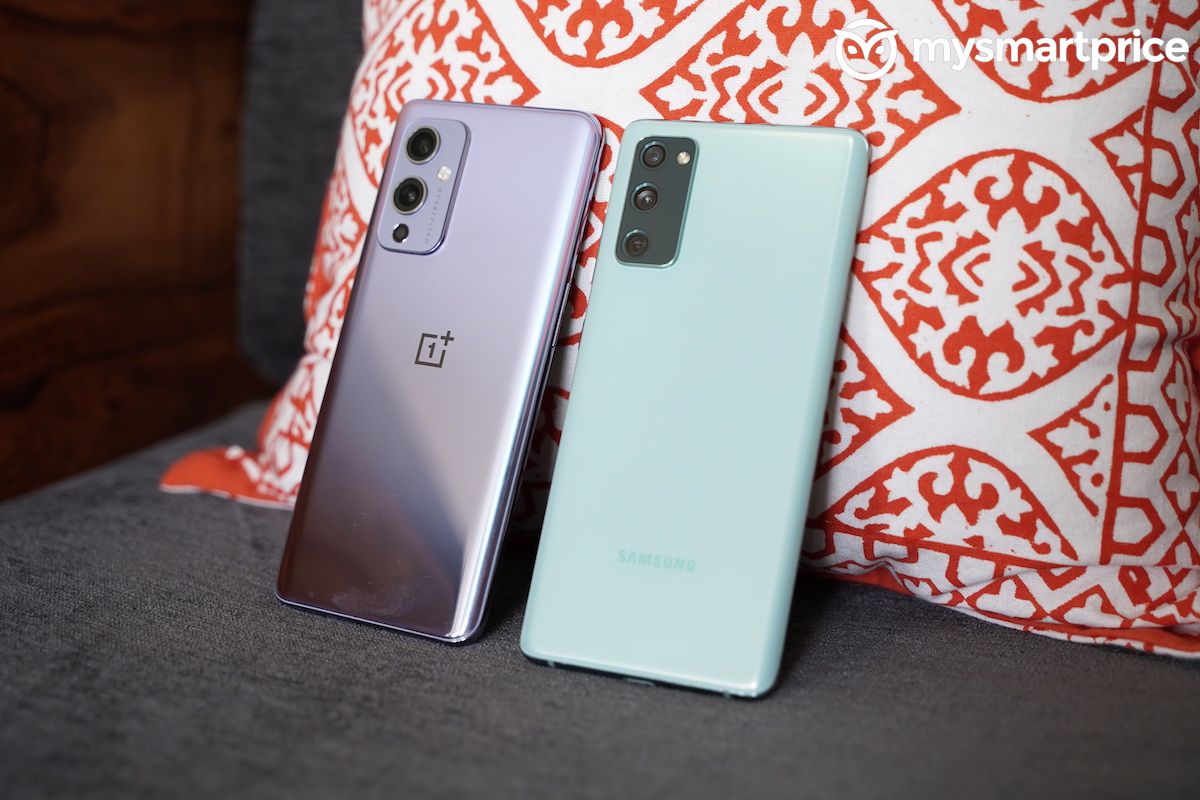
As for the network performance, the S20 FE 5G offers support for more 5G bands compared to the OnePlus 9. Additionally, there’s support for carrier aggregation as well. The call quality, 4G network performance on Airtel, and the sound quality of the earpiece is all A-grade. No complaints whatsoever.
Should You Buy the Samsung Galaxy S20 FE 5G?
It’s been a while since a comparison video has ended in a conclusive winner for me. I have no hesitation in recommending the Galaxy S20 FE 5G over the OnePlus 9. The only real advantages that the OnePlus 9 has over the Galaxy S20 FE 5G is in the performance department and charging speeds. In every other scenario, the Galaxy S20 FE 5G emerges triumphant or is equally good, like in the case of the display and software. Plus you get features such as IP rating and wireless charging, both available only on the far more expensive OnePlus 9 Pro.
It almost feels like a cocky move by Samsung to bring the S20 FE 5G at this juncture when everyone in India had forgotten about this variant and moved on. Oh, and it doesn’t hurt that Samsung has launched the phone at an introductory of Rs 47,999 to purposefully undercut the OnePlus 9 and grab your attention. Genius move to upset OnePlus’ forward march, if you ask me.
So, what do you folks think about the review? Do let me know if you have any queries and I will try to answer them. Until next time, this is Ershad from MySmartPrice signing off. Goodbye and Godspeed, my friends.
